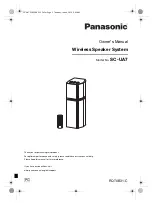
69
EN
General
Basic principle
In the LaserHybrid process, the advantages of the laser beam (deep penetration and nar-
row heat-affected zone) are combined with the advantages of the MIG/MAG process (dep-
osition of filler metal and good gap-bridging ability).
Mode of opera-
tion and practical
application
Up to now, unusual requirements in terms of parts to be joined could either not be met at
all or only at very great expense. The fundamentally new LaserHybrid process taps into
vast synergy effects for a wide range of joining technology applications.
Competitiveness is boosted as a result of the following advantages offered by the Laser-
Hybrid process:
-
a wider range of application areas
-
enhanced performance
-
reduced production times and costs
-
higher productivity
As solid state lasers with a high output power are required, it has only recently become
possible to achieve a stable process. Numerous studies have examined hybrid welding
processes, which allow both the laser and the arc process to act on one single process
zone (plasma and molten metal).
By choosing favourable process parameters, both for the laser process and the arc pro-
cess, it is possible to selectively influence weld-seam properties, such as the geometry and
structural composition. By depositing filler metal, the arc process provides increased gap-
bridging ability, determines the weld width and thus reduces the amount of joint preparation
needed.
The interaction between the two processes leads to a substantial increase in efficiency.
LaserHybrid pro-
cess
An Nd:YAG laser with an intensity above 106 W/cm² is suitable for welding metallic work-
pieces. When the laser beam hits the surface of the material, it heats up this spot to vapor-
isation temperature, and a vapour cavity is formed in the weld metal due to the escaping
metal vapour. The result is a weld-seam that is very deep in relation to its width. The energy
flux density of the arc process is approximately 104 W/cm².
The figure below illustrates the basic principle of LaserHybrid welding. The laser beam de-
picted here feeds heat to the weld metal in the top part of the seam, in addition to the heat
from the arc. Unlike a loose combination of the laser welding process and the arc process,
LaserHybrid welding combines both welding processes in the same process zone. The re-
sulting interaction of the processes can be controlled by varying the arc or laser processes
used.
The combined effect of the laser process and the heat input of the arc process increases
both the weld penetration depth and the welding speed (compared to either of the process-
es used on their own). The metal vapour escaping from the vapour cavity retro-acts upon
the arc plasma. Absorption of the Nd:YAG laser radiation in the plasma remains negligible.
Depending on what ratio of the two power inputs is chosen, the character of the overall pro-
cess may be determined to a greater or lesser degree either by the laser or by the arc.
Содержание LaserHybrid
Страница 2: ...2 ...
Страница 4: ...4 ...
Страница 54: ...54 Gesamtschaltplan Schaltplan ...
Страница 56: ...56 ...
Страница 58: ...58 ...
Страница 80: ...80 Mounting the LaserHybrid head in positions C and D 1 Holder m m 5 6 1 3 90 mm m m 5 6 1 3 90 mm 90 mm 1 1 ...
Страница 90: ...90 Re Point 5 0 2 s Time lag is a standard value to prevent the end of the wire burning onto the weld pool ...
Страница 92: ...92 Re Point 5 0 2 s Time lag is a standard value to prevent the end of the wire burning onto the weld pool ...
Страница 107: ...107 EN Entire circuit diagram Circuit diagram ...
Страница 110: ...110 ...
Страница 160: ...160 Schéma d ensemble des connexions Schéma de connexions ...
Страница 162: ...162 ...
Страница 163: ......
Страница 167: ...167 ...
Страница 168: ...168 ...
Страница 171: ...171 ...
Страница 174: ...174 ...
Страница 175: ...175 ...
Страница 176: ...176 ...
Страница 177: ...177 ...
Страница 178: ...178 ...
Страница 179: ...179 ...
Страница 180: ...180 ...
Страница 181: ...181 ...
Страница 182: ...182 ...
Страница 183: ...183 ...
















































